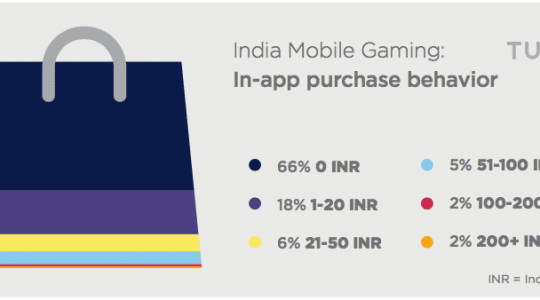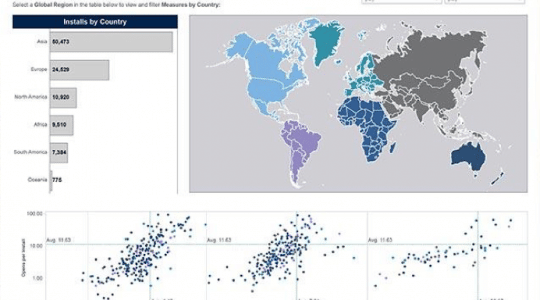
At TUNE, we reported that earlier this month, in 2016, more than half the planet will own and use a smartphone, following a global increase of 800 million new users in 2015. The shift to mobile has completely transformed how consumers interact with brands. According to Google:
- 87 percent of millennials have their smartphone at their side, day and night.
- We check our smartphones an average of 150 times a day.
- Each of these mobile sessions only last one minute or less.
It turns out that consumers turn to their phones frequently throughout the day for assistance and ideas. Google reports that 91 percent of users rely on their phones for help while performing a task.
Google calls this new pattern of mobile-centric Internet behavior “micro-moments.” And micro-moments give performance marketers new opportunities for event-triggered marketing.
Micro-Moments and Triggered Marketing
Micro-moments happen when the mobile user wants to know about something, go somewhere, complete a task, or make a purchase. Each moment depends on user intent, situation, and immediacy.
Understanding and taking advantage of micro-moments is important: 82 percent of smartphone users turn to their phones as they are making an in-store purchase. Ninety-one percent of smartphone users use their mobile device for ideas while doing a given task. Mobile is now accounting for more online sessions, but those sessions are actually getting shorter. For savvy mobile marketers, finding the right time to strike is key.
Event-Triggered Marketing: More Than Email
Event-triggered marketing is essentially identifying, categorizing, monitoring, optimizing, and executing events. It’s about understanding the customer’s and aim—in 2016 this means anticipating those micro-moments that now dominate mobile Internet behavior.
Traditionally, triggered marketing has been linked with email marketing. A customer will usually receive an email after “triggering an event,” like browsing for a product on an online shopping site. In this situation, triggered marketing has been impersonal and a subsequent “drip” of follow-up contact is not particularly personalized either.
But in the era of micro-moments, this isn’t enough. Instead, the best event-triggered marketing tactics display two qualities: personalization, and a way to track previous purchases and preferences across multiple points of contact.
Luckily, performance marketers have more tools than ever before to track, measure and analyze consumer behavior. But, as Google shows, there are lots of category-relevant micro-moments happening during a search at any given time, but brands are missing opportunities to engage because they’re not showing up. [bctt tweet=”You can increase unaided brand awareness by 46% simply by making sure your site appears in mobile search results.”]
Here are five tips for performance marketers to improve their event-triggered marketing campaigns:
5 Tips for Successful Event-Triggered Marketing
1. Identify Events or Triggers and Understand What Your Customers Want
It’s important to understand the entire customer journey, from research to purchase. Four key micro-moments are:
- “I want to know” — someone is researching, exploring or discovering information about a product, service or experience, but isn’t ready to purchase.
- “I want to go” — someone is looking for a local business, or wants to purchase something near by.
- “I want to do” — someone is typically looking for step-by-step information about how to perform or complete a specific task.
- “I want to buy” — someone is looking for information such as price or availability just prior to the moment of purchase.
Consider how you can integrate each event, which can be an app download, email sign up, or page-specific site visit into your campaign based on such triggers. It’s important to identify the context and intent of the behavior.
For example, Sephora’s marketing team noticed how often its customers searched their phones while standing in the store aisles. They realized customers were searching for product reviews before making their purchases. To address this “I want to know” moment, Sephora updated its mobile website and app to deliver product information more readily to shoppers.
2. Segment Your Customers Into Personas
Once you understand intent, build a persona for your customers that defines his/her wants and needs, and how to engage with them online. These personas can be used to segment your audience so you can create unique campaigns that are tailored to them specifically.
3. Provide the Right Information at the Right Time
Traditionally, online marketers have relied on high volumes of impressions to convert a small number of leads. In the era of micro-moments, marketers need to leverage meaningful, quality information to cater to specific personas in order to convert more often.
For example, a range of different customers might visit an online electronics retailer. One individual may be ready to purchase, while another may be visiting the site to do some research.
For the first customer, make sure there are no roadblocks to making a purchase by offering simple, clear steps from visiting a product page to confirming the purchase. For the second customer, develop a strategy to keep them engaged and encourage them to return to the site when they’re ready to make a purchase. This may involve remarketing or offering a subscribe link to your email newsletter.
4. Be Opportunistic and Define Events Broadly
Events don’t have to be triggered by customer contact or activity. Instead, look for patterns in your offering that might meet the needs of a specific, but undefined segment of your customers.
For example, a shoe retailer may have an overstock of size 14 shoes. By seeing how many existing customers have shopped for this shoe size in the past, the retailer can quickly send them an email to let them know of the relevant stock on the site.
5. Track Your Post-Click Impressions
You can’t be present for every micro-moment. That’s where performance marketing tools like TUNE can help supplement your event-triggered marketing campaigns. With real-time reporting, you’ll be able to track all of your customers’ post click and impression events, and know when they’re responding to your online marketing efforts. This will help you better understand customer intent and where your campaigns are most impactful.
Author
Becky is the Senior Content Marketing Manager at TUNE. Before TUNE, she handled content strategy and marketing communications at several tech startups in the Bay Area. Becky received her bachelor's degree in English from Wake Forest University. After a decade in San Francisco and Seattle, she has returned home to Charleston, SC, where you can find her strolling through Hampton Park with her pup and enjoying the simple things in life.




Leave a Reply
You must be logged in to post a comment.